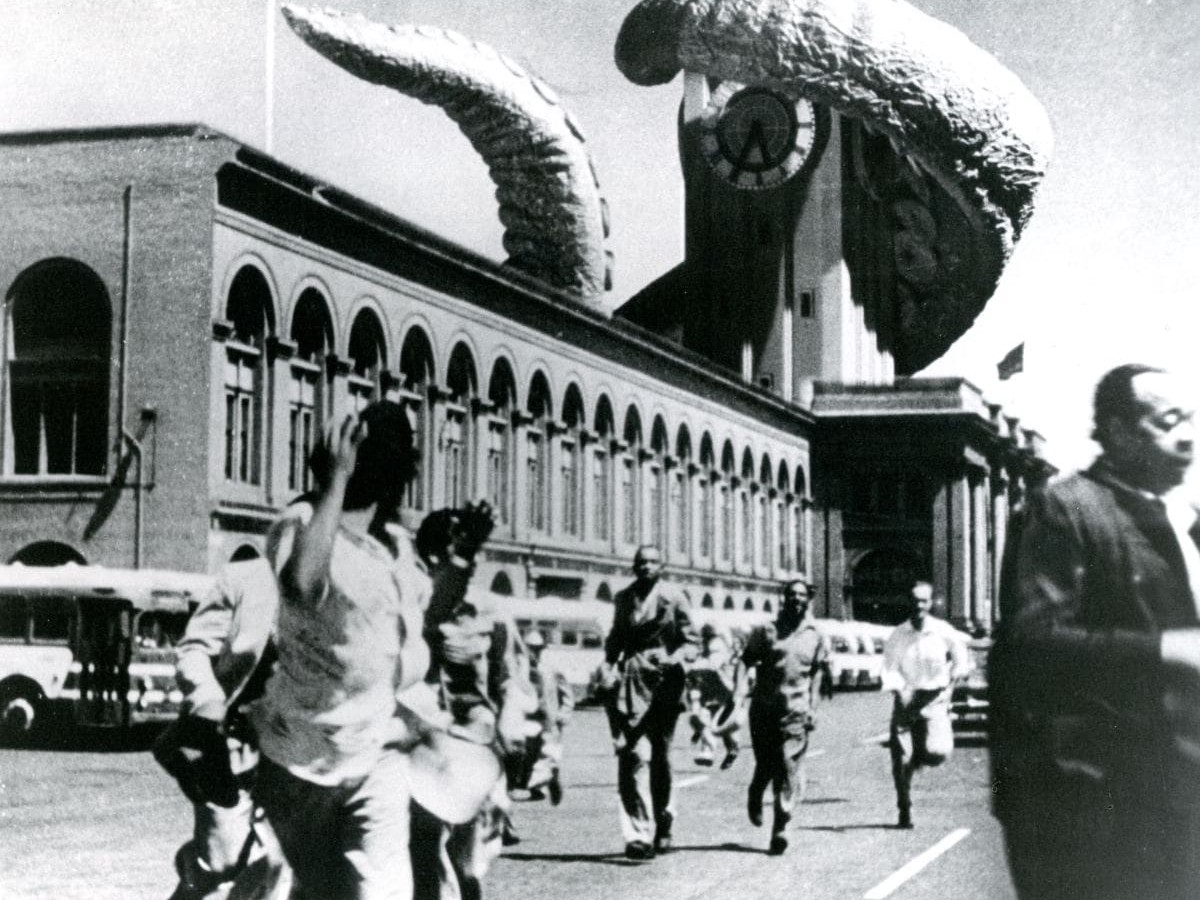Collection on Screen:
Sea Monsters
December 13 to 15, 2024
"Though in many of its aspects this visible world seems formed in love, the invisible spheres were formed in fright." What Herman Melville notes about the white whale in his unforgettable sea monster classic Moby Dick is also true of cinema: Among the powers at work in the spheres of the screen, we need to count, alongside the desire to look, the desire to fear as well, the desire to scare ourselves and give in to the illusion of danger. It goes without saying why monsters are happy to crawl into cinemas, because under the protection of darkness, the impossible becomes possible: Cinema is larger than life. Here, monsters become believable and fear and horror can be experienced with pleasant shivers.
The beasts on screen plumb the depths of our souls with a preference for the deep seas, there takes shape in them fear of a demon of natural forces set free by humans. The sea monsters in our series featuring seldom shown monsters from our collection are the consequence of human misdeeds: They were caught by human hands (Finding Nemo, 2003), exposed to radiation (It Came From Beneath the Sea, 1955), or came in contact with poisonous chemical waste (The Host, 2006). They abduct us into a war-ridden past (Das Boot, 1997) or a utopian future (The Abyss, 1999), and they take sober stock of the present (The Forgotten Space, 2010).
Lean back and make yourself comfortable – the monsters are coming: The sea monsters in this series are monsters of revenge, cuddles, war, and capitalism. May whoever has never loved a monster throw the first stone. (Tom Waibel / Translation: Ted Fendt)
To mark our anniversary, we are dedicating this selection of films with sea monsters to the mythical creature Zyphius – featured on our logo since the Film Museum was founded in 1964.
"Though in many of its aspects this visible world seems formed in love, the invisible spheres were formed in fright." What Herman Melville notes about the white whale in his unforgettable sea monster classic Moby Dick is also true of cinema: Among the powers at work in the spheres of the screen, we need to count, alongside the desire to look, the desire to fear as well, the desire to scare ourselves and give in to the illusion of danger. It goes without saying why monsters are happy to crawl into cinemas, because under the protection of darkness, the impossible becomes possible: Cinema is larger than life. Here, monsters become believable and fear and horror can be experienced with pleasant shivers.
The beasts on screen plumb the depths of our souls with a preference for the deep seas, there takes shape in them fear of a demon of natural forces set free by humans. The sea monsters in our series featuring seldom shown monsters from our collection are the consequence of human misdeeds: They were caught by human hands (Finding Nemo, 2003), exposed to radiation (It Came From Beneath the Sea, 1955), or came in contact with poisonous chemical waste (The Host, 2006). They abduct us into a war-ridden past (Das Boot, 1997) or a utopian future (The Abyss, 1999), and they take sober stock of the present (The Forgotten Space, 2010).
Lean back and make yourself comfortable – the monsters are coming: The sea monsters in this series are monsters of revenge, cuddles, war, and capitalism. May whoever has never loved a monster throw the first stone. (Tom Waibel / Translation: Ted Fendt)
To mark our anniversary, we are dedicating this selection of films with sea monsters to the mythical creature Zyphius – featured on our logo since the Film Museum was founded in 1964.
